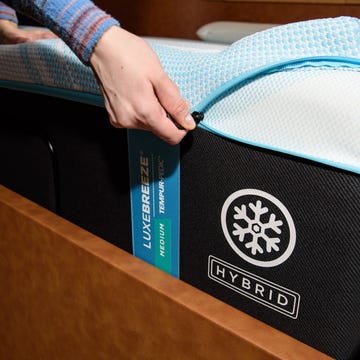The Best Smart Smoke Detectors
Protect your home and loved ones from dangerous fires — even when you're on the road.

We've been independently researching and testing products for over 120 years. If you buy through our links, we may earn a commission. Learn more about our review process.
The best smoke alarms on the market just got even better, thanks to a new industry standard that took effect on June 30, 2024. Known as the UL 217 8th Edition Smoke Alarm Update, the rule is designed to reduce the risk of nuisance alarms and make the devices better equipped at detecting smoke from synthetic materials.
“We know that all too often, nuisance alarms from things like burnt toast can lead to inoperable smoke alarms when consumers take out the batteries,” said Dan DiClerico, director of Home Improvement and Outdoor at the Good Housekeeping Institute. “This new standard will reduce the risk of that and other safety hazard inside homes.”
In pulling together this list of top-rated smart smoke alarms, our experts only considered models that meet the latest standard, in addition to our own safety and performance standards. It's the same rigor we apply to all essential home safety equipment, including fire extinguishers and gas leak detectors. Based on our latest review, the following smart smoke detectors make the cut by being industry-certified, easy to install and boasting simple-to-use apps.
Daniel Bortz (he/him) is a freelance writer in Arlington, Va who has written about home improvement for more a decade, including product reviews across every major category, from appliances to smart home technology, as well as articles on real estate, personal finance, and more. His work has been published by The New York Times, The Washington Post, Consumer Reports, Newsweek, Money magazine, among others. He’s also a licensed real estate agent who watches way too much HGTV.
Having written thousands of product reviews and how-to articles on all aspects of home ownership, from routine maintenance to major renovations, Dan (he/him) brings more than 20 years of industry experience to his role as the director of the Home Improvement & Outdoor Lab at the Good Housekeeping Institute. A one-time roofer and a serial remodeler, Dan can often be found keeping house at his restored Brooklyn brownstone, where he lives with his wife and kids.

Readers Also Read

The Best Pillows

The Best Cooling Mattresses

This Amazon Ready-Made Tiny Home Is a Game-Changer

These Are Our Favorite Things to Buy on Amazon


















